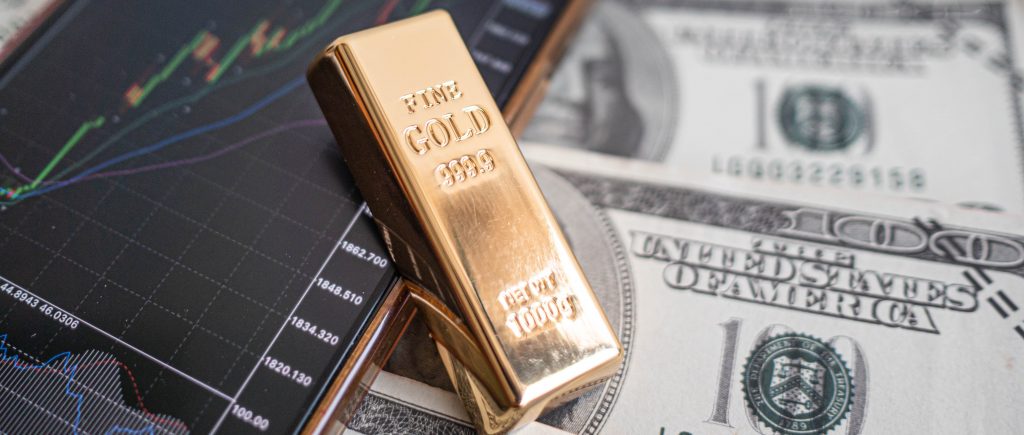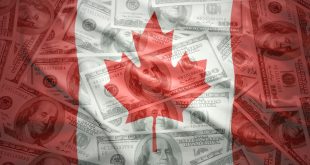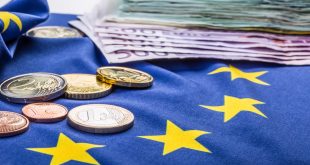The U.S. dollar advanced on Thursday, building on prior gains after the Federal Reserve highlighted growing stagflation risks in the U.S. economy, prompting markets to reassess expectations for near-term interest rate cuts.
At 04:10 ET (08:10 GMT), the U.S. Dollar Index, which tracks the performance of the greenback against six major peers, rose 0.4% to 99.877, following a 0.3% gain in the previous session.
Fed’s Stagflation Warning Lifts the Dollar
The Federal Open Market Committee (FOMC) held interest rates steady in the 4.25%-4.50% range during its May meeting, as widely expected. However, the central bank struck a more cautious tone, warning of increased risks to both inflation and employment amid an uncertain economic backdrop.
Fed Chair Jerome Powell noted that while the economy has shown resilience, the path forward remains unclear. He emphasized that policymakers are closely watching for signs that inflation could reaccelerate, especially in the context of ongoing global trade tensions and uneven growth data.
The dovish tilt was enough to temper expectations for a rate cut in June, with markets now assigning just a 20% probability to such a move—down from 30% a day earlier. A July cut is still seen as likely, but the odds have moderated to 70% from near-certainty last week.
The dollar was further buoyed by comments from U.S. President Donald Trump, who said he would unveil a new trade agreement with a major economy later Thursday. The New York Times reported the deal is with the United Kingdom, marking what could be the first major post-tariff agreement under the Trump administration’s revised trade agenda.
Euro and Sterling Struggle Despite Trade and Export Tailwinds
In Europe, the euro dipped, with EUR/USD down 0.1% at 1.1292. German economic data released Thursday showed a surprise rebound in exports and industrial output for March. Exports rose 1.1% month-over-month, supported by a 2.4% increase in shipments to the U.S. as firms rushed to get ahead of anticipated tariffs. Industrial production also rose by 3%, outpacing forecasts.
However, these upbeat figures failed to lift the euro amid broad dollar strength and lingering trade uncertainty.
The British pound also slipped, with GBP/USD falling 0.1% to 1.3291. Despite optimism around a potential U.S.-U.K. trade deal, traders remained cautious ahead of the Bank of England’s policy decision later in the day. The BoE is widely expected to cut rates by 25 basis points to 4.25%, and markets are already pricing in up to three more rate cuts before year-end, limiting sterling’s upside.
Yen Weakens, Asian Currencies Mixed
In Asia, USD/JPY rose 0.4% to 144.36, as the yen weakened amid reduced demand for safe havens following the announcement of trade talks between Washington and Beijing.
The Chinese yuan also slipped, with USD/CNY up 0.2% to 7.2368. While the confirmation of trade talks between U.S. Treasury Secretary Scott Bessent and Chinese Vice Premier He Lifeng in Switzerland offered some optimism, Beijing has reiterated that no meaningful negotiations will occur until the U.S. scales back its aggressive tariff regime.
Market sentiment remained fragile, with participants unconvinced that the upcoming talks will produce a breakthrough in the protracted trade standoff.
Outlook
The dollar is expected to remain well-supported in the near term, bolstered by reduced rate cut bets and ongoing geopolitical uncertainty. Investors will be closely monitoring President Trump’s trade announcement later Thursday and the outcome of central bank meetings in the U.K., Sweden, and Norway for additional direction.
 Noor Trends News, Technical Analysis, Educational Tools and Recommendations
Noor Trends News, Technical Analysis, Educational Tools and Recommendations





